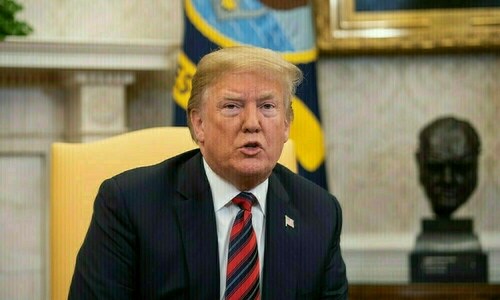US Broadens Global Trade War with New Tariffs
The United States, under President Donald Trump, escalated its global trade disputes by declaring a 50% tariff on imported copper and signaling impending levies on semiconductors and pharmaceuticals.
This announcement followed closely on the heels of imposing significantly increased tariffs on 14 trade partners, including major suppliers like South Korea and Japan. Trump also reiterated his intention to impose 10% tariffs on goods from Brazil, India, and other BRICS nations.
Despite these actions, Trump noted that trade discussions with the European Union and China are progressing positively. However, he indicated that a tariff notification to the EU could be issued imminently.
Trump’s statements, delivered during a White House cabinet meeting, could further destabilize a global economy already strained by existing and threatened tariffs on imports into the US market. Following the copper tariff announcement, US copper futures saw an increase of over 10%. These new tariffs would complement existing duties on steel, aluminum, and automobile imports. The pharmaceutical sector also saw declines as Trump threatened a potential 200% tariff on drug imports, though he suggested a delay of approximately one year.
Other nations have announced intentions to mitigate the impact of Trump’s proposed tariffs, particularly after he extended a deadline from Wednesday to August 1.
The Trump administration initially pledged “90 deals in 90 days” following the introduction of country-specific tariffs in early April. To date, agreements have only been finalized with the United Kingdom and Vietnam, although Trump stated that a deal with India is nearing completion. Trump asserted that numerous countries are eager to negotiate, stating, “It’s about time the United States of America started collecting money from countries that were ripping us off … and laughing behind our back at how stupid we were.”
Tariff Levels Reach Highest Since 1934
Following Trump’s disclosure of increased tariffs on 14 nations, the Yale Budget Lab, a US research group, estimated that consumers would face an effective US tariff rate of 17.6%, marking an increase from the previous 15.8% and representing the highest level recorded since 1934. Goldman Sachs indicated that Monday’s measures would elevate the US effective tariff rate by 1.4 percentage points. The Trump administration has been promoting these tariffs as a substantial source of income.
Treasury Secretary Scott Bessent disclosed that Washington has amassed approximately $100 billion thus far and anticipates reaching $300 billion by year-end.
Global stock markets exhibited a tempered reaction on Tuesday, absorbing the latest developments in the tariff situation. Trump mentioned he would “probably” inform the European Union within two days about the anticipated rate for its exports to the US, adding that the 27-member bloc has been treating his administration “very nicely” in trade discussions.
The EU, the largest bilateral trade partner of the US, intends to finalize an agreement before August 1, including concessions for specific key export sectors like aircraft, medical devices, and spirits, according to EU sources. Brussels is also weighing a strategy to protect European automakers with substantial US production operations.
However, German Finance Minister Lars Klingbeil cautioned that the EU is prepared to respond if necessary.



Comments (0)
No comments yet. Be the first to comment!
Leave a Comment